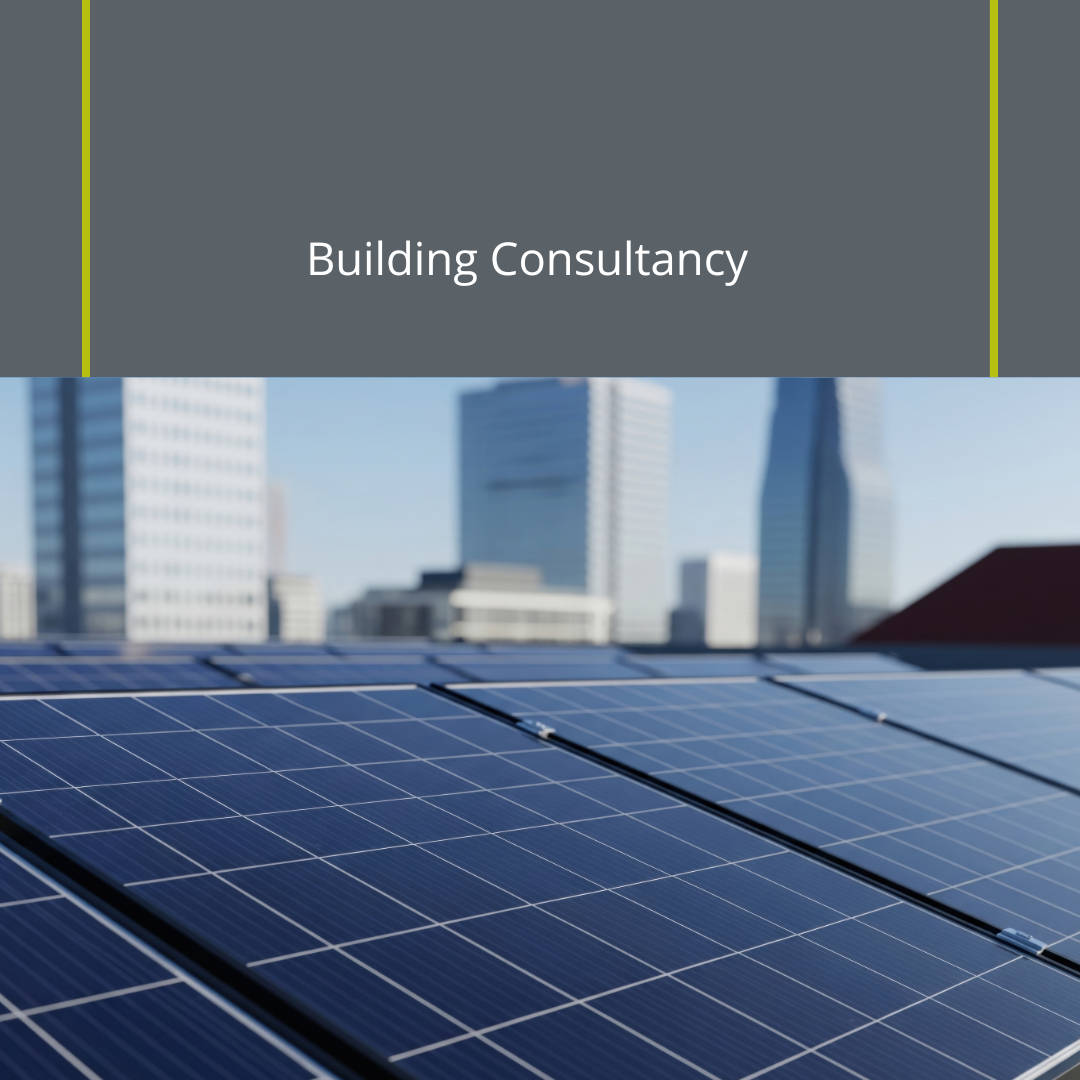
Commercial Solar Panel Installations: Key Considerations
July 24, 2025
Our Building Consultancy Team explored the benefits, risks, and essential planning steps for commercial solar panel (PV) installations.
Why install solar panels?
- Reduction in energy bills for occupiers: Enables tenants to use onsite-generated electricity, significantly reducing energy bills - the savings can provide payback in as little as 3-5 years. Solar Power Purchase Agreements (PPA) can also reduce costs.
- Improves EPC ratings: Solar panels can provide a higher Energy Performance Certificate (EPC) rating or assist in meeting requirements such as the Minimum Energy Efficiency Standards (MEES), which set minimum EPC levels for lettable commercial property in England and Wales.
- Reduce carbon footprint: Lowers the building’s environmental impact - supporting Environmental, Social, and Governance (ESG) objectives.
- Attract eco-conscious clients: Sustainability is increasingly important. PVs help attract clients committed to green supply chains and carbon reduction targets.
What are the risks and considerations?
- Lease-End Obligations: There is currently no standard guidance for lease-end PV obligations. It’s important to agree upfront on removal, handover, and certification requirements, as well as who is responsible for their upkeep and maintenance.
- Structural Load: A structural survey ensures the roof can support PV system weight. Reinforcement, if needed, may add cost and complexity.
- Roof condition report: The roof may need to be coated before the panels are installed.
- DNO (District Network Operator) Notification or Application: Required under G98/G99 regulations depending on system capacity.
- Grid Connection Constraints: While most systems can export energy under the Smart Export Guarantee (SEG), there is no automatic guarantee of grid export. Export capacity depends on the local District Network Operator (DNO) infrastructure and approvals.
- Fire Risk Assessment: Required under the Regulatory Reform (Fire Safety) Order 2005.
- Planning Permission: Most commercial PV systems fall under permitted development, but this depends on height, visual impact, and listed status of the building.
- Insurance Approval: Check and comply with your insurer’s policy conditions before proceeding.
PV electricity generation – What affects output?
- Roof Size: Dictates the total number of panels and thus the maximum potential energy generation.
- Geographical Location: The south of the UK receives more solar irradiance than the north, affecting generation potential.
- Shading: Nearby trees, buildings, or obstructions can reduce performance. Even partial shading on a single panel can affect output.
Selecting a PV contractor:
- Regulation: PVs are subject to voluntary and statutory standards:
- IEC/BS EN standards regulate product performance and safety.
- Electrical works must comply with BS 7671 (IET Wiring Regulations) and Part P of the Building Regulations.
- Certifications and Registrations:
- MCS (Microgeneration Certification Scheme) governs installation quality and is required for SEG eligibility
- NICEIC (National Inspection Council for Electrical Installation Contracting) or other electrical accreditation
- CHAS (Contractors Health and Safety Assessment Scheme), Constructionline, SafeContractor, etc.
- ISO certifications (particularly ISO 9001, 14001, 45001)
- Experience and Reputation: Proven history in delivering commercial rooftop PV projects.
- Health & Safety and Insurance: Must have sufficient liability and professional indemnity cover.
- Statutory Compliance: Confirm alignment with Building Regulations, CDM 2015, and fire safety obligations.
- Labour Source: Clarify whether labour is directly employed or subcontracted. Request evidence of training and H&S procedures.
- Warranties: Ensure installation and product warranties are robust, transferrable, and compatible with existing warranties.
Operations & maintenance (O&M)
- Plan for O&M at the outset. Routine inspections, performance monitoring, and cleaning may be required to meet warranty terms and maintain efficiency.
- The upcoming RC62 refers to Solar Energy UK’s Industry Best Practice Manual 2.0, which sets out O&M guidelines for rooftop PV systems.
Mark Pepper
BSc (Hons), MRICS / Executive Partner
email mark.pepper@kirkbydiamond.co.uk phone 01582 738 866Paul Hazell
BSc (Hons), MRICS / Executive Partner
email paul.hazell@kirkbydiamond.co.uk phone 01908 208 846Grant Whittaker
BSc (Hons), MRICS / Associate
email grant.whittaker@kirkbydiamond.co.uk phone 01908 678 800Jacob Holmes
BSc (Hons) / Graduate Building Surveyor
email jacob.holmes@kirkbydiamond.co.uk phone 01908 015 632Lucas Charter
BSc (Hons) / Graduate Building Surveyor
email lucas.charter@kirkbydiamond.co.uk phone 01582 393331